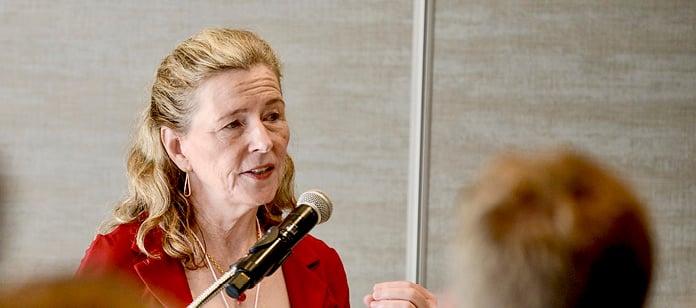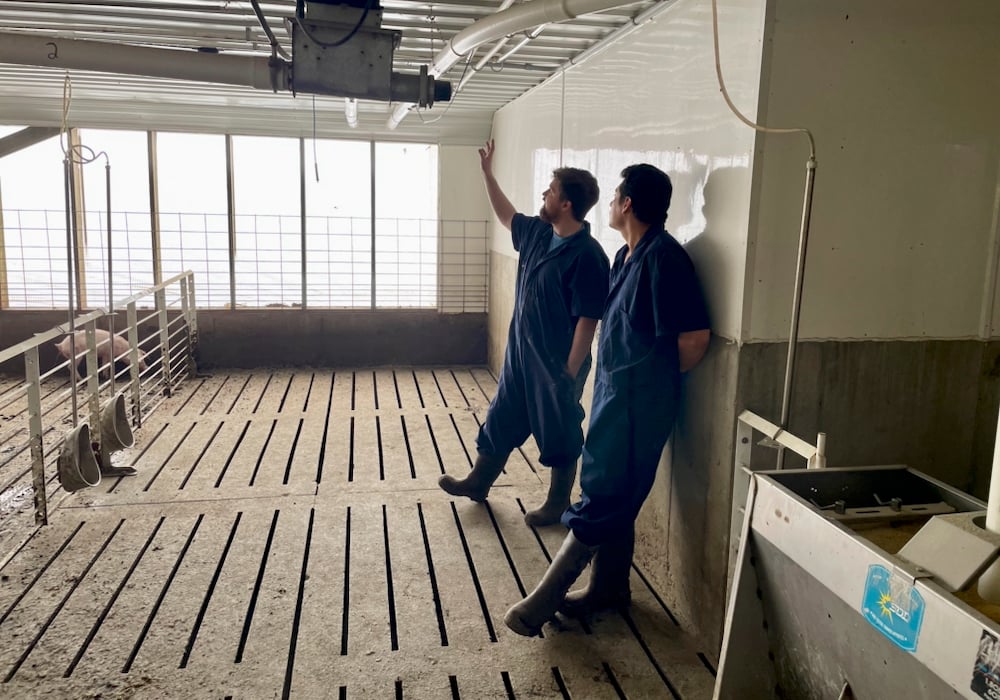University of Waterloo engineers stronger agriculture ties

The University of Waterloo engineering program is sowing the seeds of agriculture technology development, one partnership at a time.
Read Also


Technology uses sensors to manage feed
For livestock producers, feed consumption and conversion are leading success indicators, but measuring this in real time can be challenging….
“Collectively, there is so much more we can do as a country and as a province towards this,” said Mary Wells, the university’s dean of engineering, during the Livestock Research Innovation Corporation symposium in Elora.
Why it matters: The University of Waterloo aims to cultivate relationships and tech tie-ins with agriculture, agri-food and academia.
“We are the biggest research-intensive university to do co-op at scale. (There’s) tens of thousands of students going out every year.”
To obtain a Bachelor of Applied Science and Engineering degree, students must complete six four-month work terms throughout the five-year program. Wells said the diversity of experience provides students with a global outlook, creativity and the ability to make connections.
“This is where we could collaborate in terms of giving these co-op students a chance to work in your sector, to see what that’s like, to take what they’re seeing in other sectors, and maybe apply them to what you guys are doing,” said Wells.
Waterloo’s engineering program focuses on research expertise in AI, robotics, autonomous systems, bioengineering, water resources, data analytics and human-machine engineering. Wells said reimagined or newly developed technology could address sector-specific issues for agriculture.
“How do we create those opportunities for graduate students? Bringing the research going on from the lab to the marketplace and the fields.”
As an example, Nanotech developments like Dr. Mahla Poudineh’s tiny, wearable health indicator patch of flexible microneedles can monitor small molecules and wirelessly send data to a smartphone. It could be adapted for animal welfare use.
The Collaborative Robotics and Automation “RoboHub” partnership program provides community space for members, researchers and students to test all aspects of robotics while introducing primary and secondary-aged students to engineering.
Wells said the university’s Sedra Student Design Centre hosts approximately 40 teams for experiential learning and engagement with the agriculture sector.
Team Collaborative Deliciousness, led by Yue Hu, was one of the top three finalists for the KUKA Innovation Award, earned for a food industry robot solution that created artisinal-grade pastries with the precision of traditional techniques. The robot is scalable and replaces repetitive tasks, reducing labour costs and ensuring consistent quality.
Darrell Petras, CEO of the Canadian Agri-Food Automation and Intelligence Network, said approximately 60,000 ag-sector jobs remain unfilled at the entry level and higher.
“Your greatest output at Waterloo is your students,” said Petras. “Communicating to them the opportunities available in agriculture and livestock, to me, that is really exciting.”
He said Waterloo graduates and new students drawn to agriculture and livestock production careers could fill high-level positions and innovate technology to address labour shortages.
The challenge is bridging the distance between agriculture and science and engineering.
Wells suggested a provincial competition could spur students to develop answers to challenges within the broader agriculture sector and build relationships between engineering and agriculture.
“We really value research partnerships. We want to be known as one of the most industry-friendly universities in the country,” she said. “There’s lots of options for connecting with our students and researchers.”
Source: Farmtario.com

